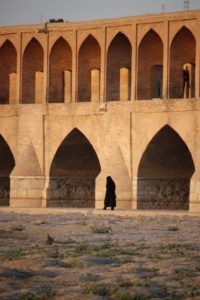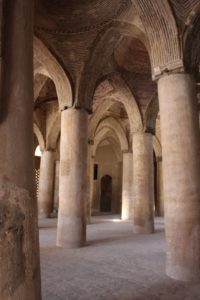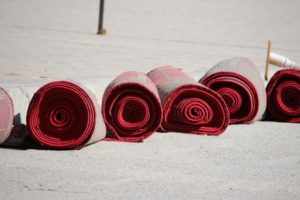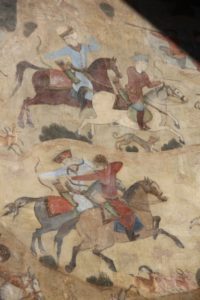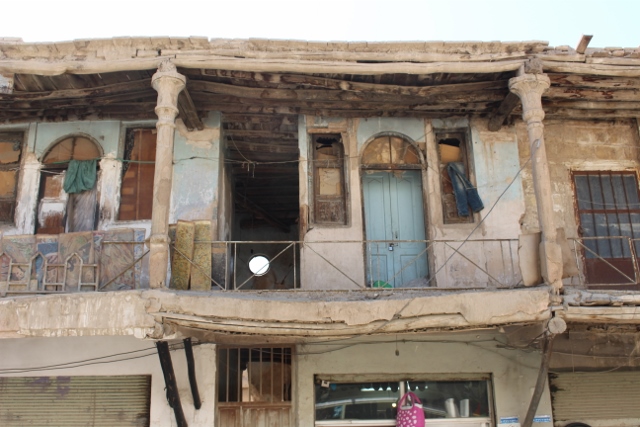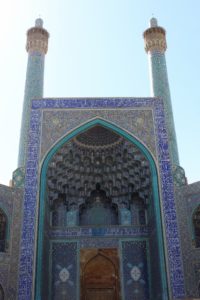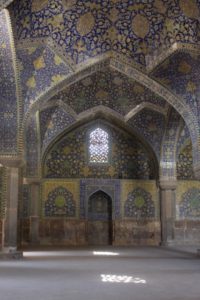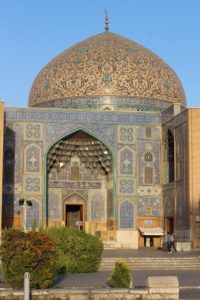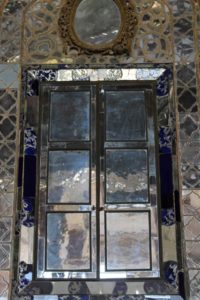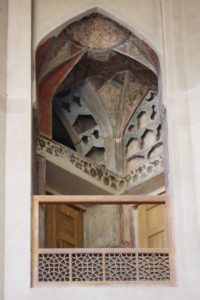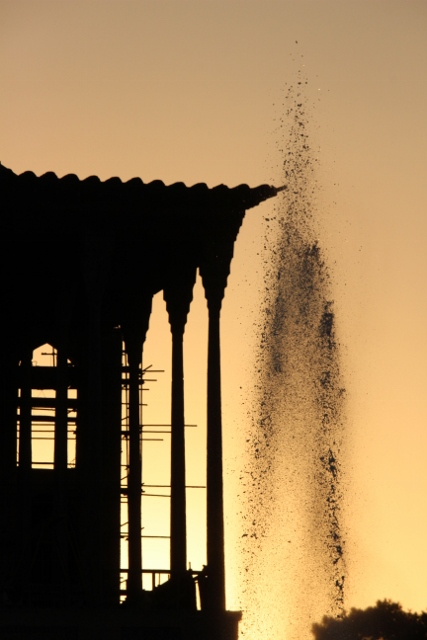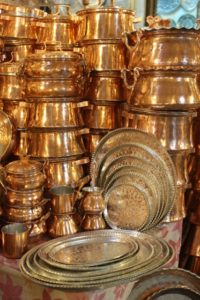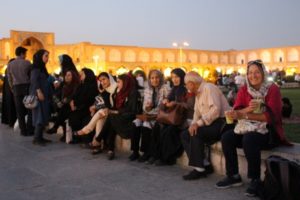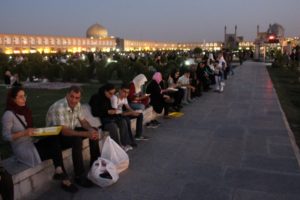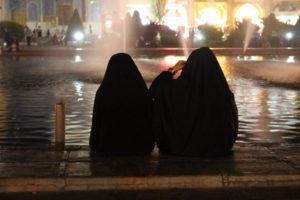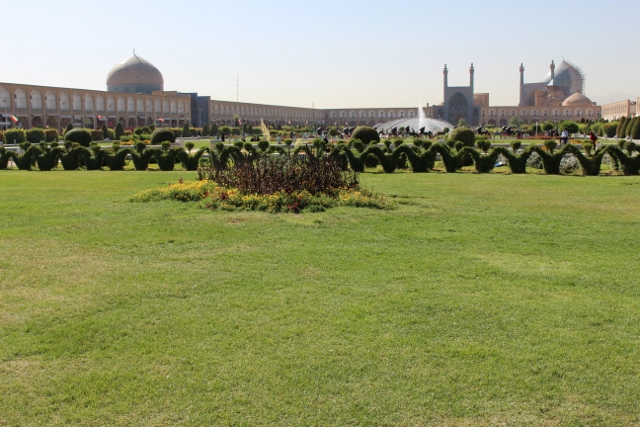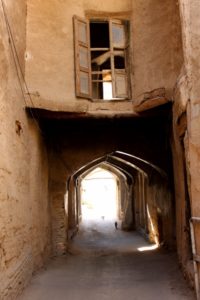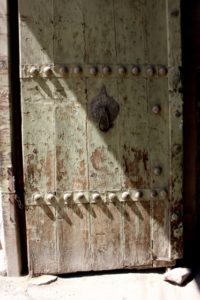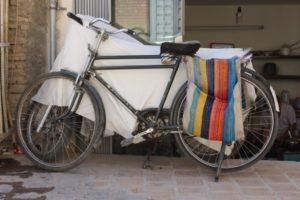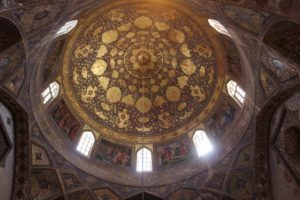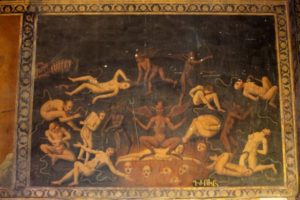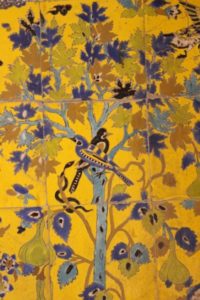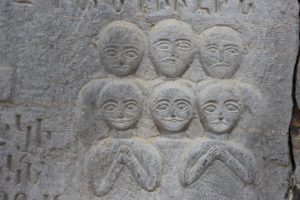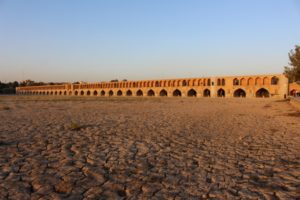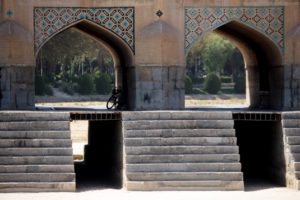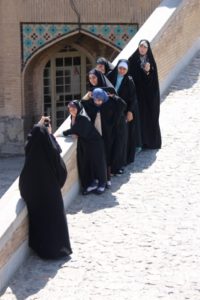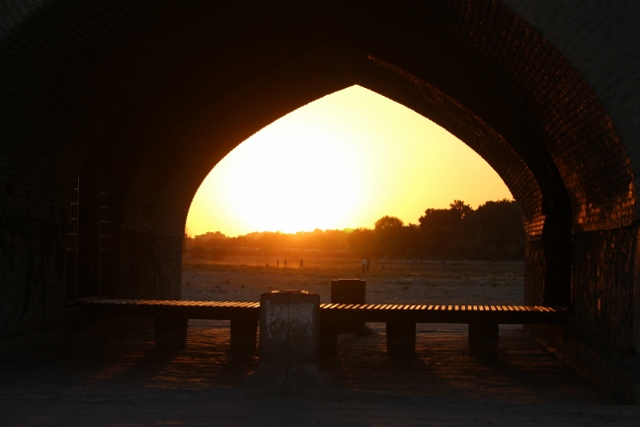Brilliant, tree-shaded and clean Isfahan has all the fabulous monuments you can wish for, but outside its evening Eman Square it lacks a bit of atmosphere.
The history of Isfahan (or Esfahan, same thing) is strongly associated with the Third Persian Empire, that of the Savafid Dynasty. Not that Isfahan hadn’t been an important city before; there are traces of Sassanid (3rd to 7th Century) construction, and halfway the 11th Century the Seljuks, a Turkic tribe, conquered Persia and made Isfahan their capital, with subseqent architectural contributions. But the Mongol invasion effectively ended this by decimating the city – only in the large Mashed-e Jameh, the Friday mosque, some of the brilliant Seljuk vaulted structures have been preserved.
The Savafids, who originated from Ardabil in the 14th Century, expanded their rule to entire Iran in the 16th Century, and their most important and successful descendant, Shah Abbas the Great, decided to move the capital to Isfahan .
Much of what makes Isfahan the pre-eminent tourist destination of Iran today, is the result of this decision. The Naqsh-e Jahan square, the second largest square in the world, was established by Abbas in 1602 as a rectangular, with at one end the brilliant Mashed-e Shah, the mosque Abbas had built, and on the other end the Qeysarieh Gate, the entrance to Isfahan’s covered bazaar; on one of the sides another mosque, the Mashed-e Sheikh Lotfallah, on the other side Abbas’ residence, the Kakh-e Ali Qapu. Behind the residence is another palace, the Kakh-e Chehel Sotun, built by Abbas’s son, Shah Abbas II in 1647 and located in a brilliant garden, a prime example of what the classical Persian garden looked like. The garden extends southwards – although nowadays you’ll have to cross a major traffic artery – towards another palace, the Kakh-e Hasht Behesht. Click at the links for further photogrphic evidence of each of these fabulous buildings.
Back to the square, however, also referred to as Eman Square. The place to be in Isfahan . Of course, with so many touristic attractions the shops around the square have a certain focus: there are the sweets shops, selling all sorts of buttery buiscuits, called sohan, and pistachio-saturated nougat, or gaz, in presentation boxes – nice souvenirs. And there is copper alley, where the copper smiths are actively busying themselves with preparing more souvenirs. Blue and turquoise tiles, carpets and pillows, wooden tables, anything that the tourist could possibly want to buy, is for sale. And yet, it is not a disturbing addition to the square, as is often the case so many other touristic places in the world; nobody is pushy, nobody is forcing their ware upon you. The sweets sellers let you taste; the carpet sellers welcome you, but are not offended if you kindly decline to visit their shop. The icecream shops have long queues, and everybody patiently waits for their turn. Once the desired flavour has been obtained, people take their icecream to the square, and sit on one of the low walls surrounding the lawns. Or they take a whole tray of icecreams back to their families, who already occupy a large carpet right on one of those lawns, whilst the children try their new bicycles. Another queque has formed at the horse-drawn carriages, who make their rounds around half of the square, for a small fee. And the rest of the people just walk slowly up and down, from one end to the other. Great atmosphere. The place to be, indeed.
Outside the Eman square, the city, the inner city, is equally pleasant. Almost all streets and boulevards are lined with trees, full-size large trees from some time ago, providing a degree of shade on the well-maintained pavements. Several larger and smaller parks create islands of peace in between the traffic-soaked avenues. And everywhere is spotlessly clean, not a snippet of paper, not a tissue on the streets or in the flower beds. Why is it that one city manages where others fail, in the same country?
The inflow of tourists obviously has an effect on the local people, they are far less surprised by foreigners in their midst than in Tabriz or Sanandaj, for instance. The attitude is not unfriendly, just a little more business-like. The various sights provide audio-tours in different languages; inside one of the mosques, there is electronic advertisement for a carpet shop. There is no tara’of anymore with the taxi drivers, at least not with foreigners; they must have been surprised a few times too often by tourists who thought their ride was really for free!
The odd exception in Isfahan is the Armenian Quarter, south of the river. We wander around one morning, searching for the Armenian churches here. The attitude of people is markedly different, there is no eye contact, no smiles. The main church, the Vank Cathedral, and the neighbouring museum are full of tourists, Armenian Iranians, I presume – I cannot see Muslims flocking to a church in large numbers. They are rude and pushy, otherwise unheard of in Iran. The church is a strange mixture of tiles and frescos: Bible-scenes, but depicted in an almost childish way. The way to the cross is much longer than we are used to in a Western church, with Jesus undergoing far more torture. The museum is not very interesting; the memory of the Armenian genocide, whilst real enough, comes across as overdone, here. In fact, a smaller church, the Bethlehem Church, is much nicer, not very crowded, and somehow more authentic; yet, the people are equally miserable. Something else, the houses and appartments look more expensive in this part of town, more attractively designed; and they are protected by high and aggressive fences, with nasty spikes to keep intruders out – something we have not seen before in Iran. Would this be because the people living here are rich? Or because they are Armenian, and just want to be prepared, if ever there is another clash of religions? I really don’t know. More church pictures here.
A little further away from the Armenians we are back to normal, back to Iran, with good humoured shop keepers. Back to the river, we admire the several bridges, also from Savafid times. We are not the only ones, many people have come to the parks around the bridges, and to the bridges themselves; some with guitars, others singing, under the arches, to benefit from the acoustics. And from the background, for the usual overkill of selfies. This is, indeed, Iran all over again.
next: something unusual, the glacier
